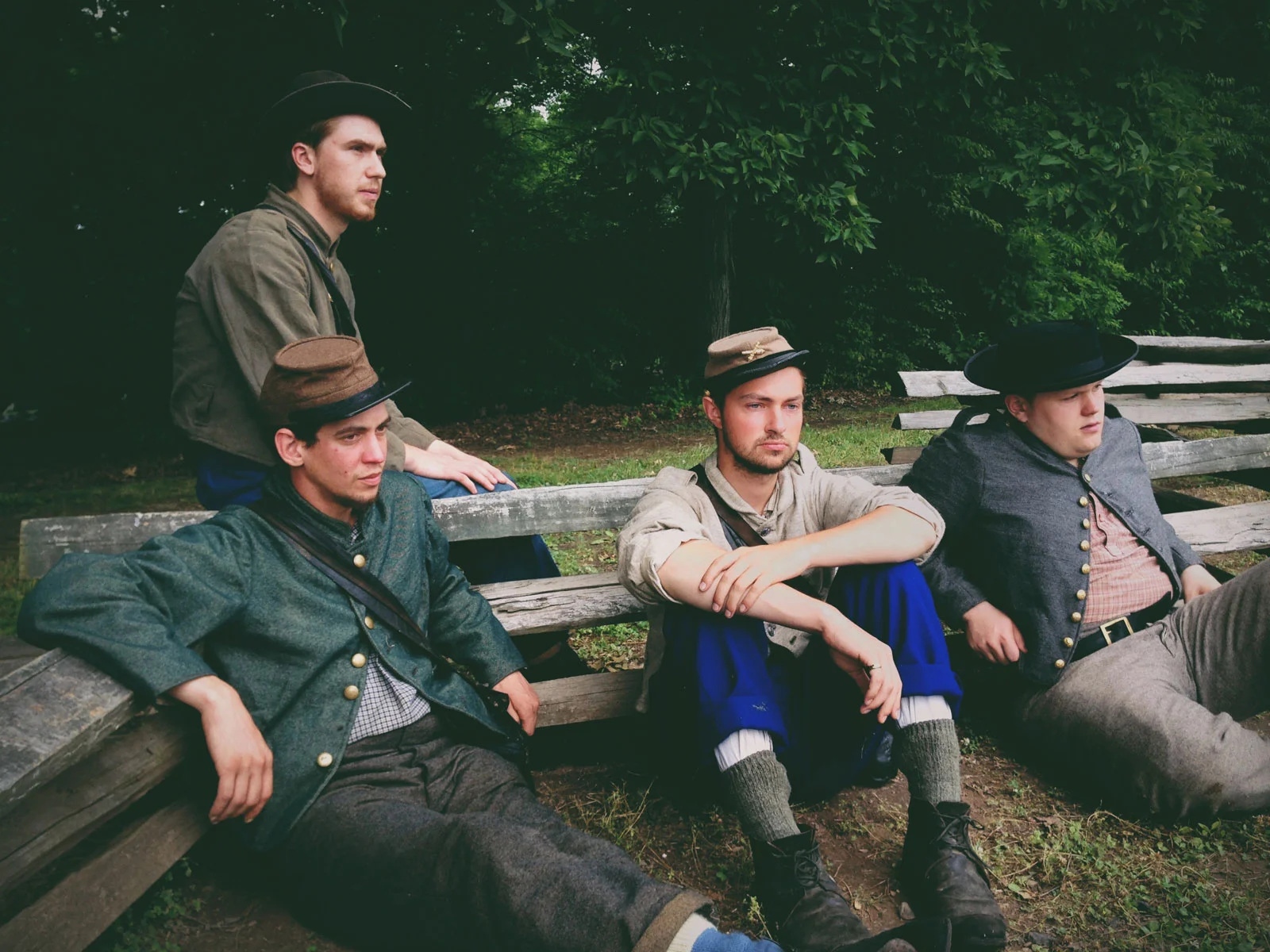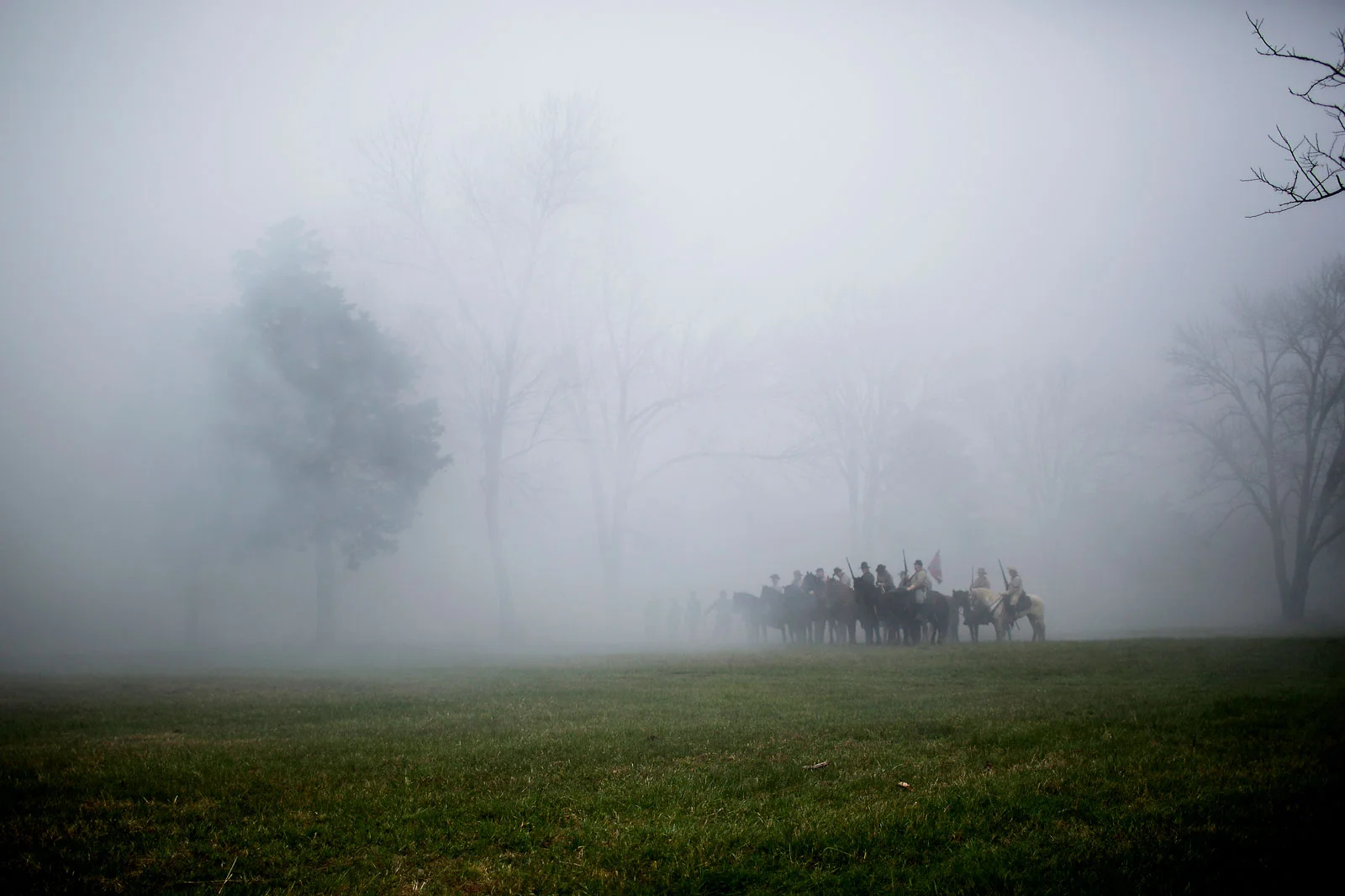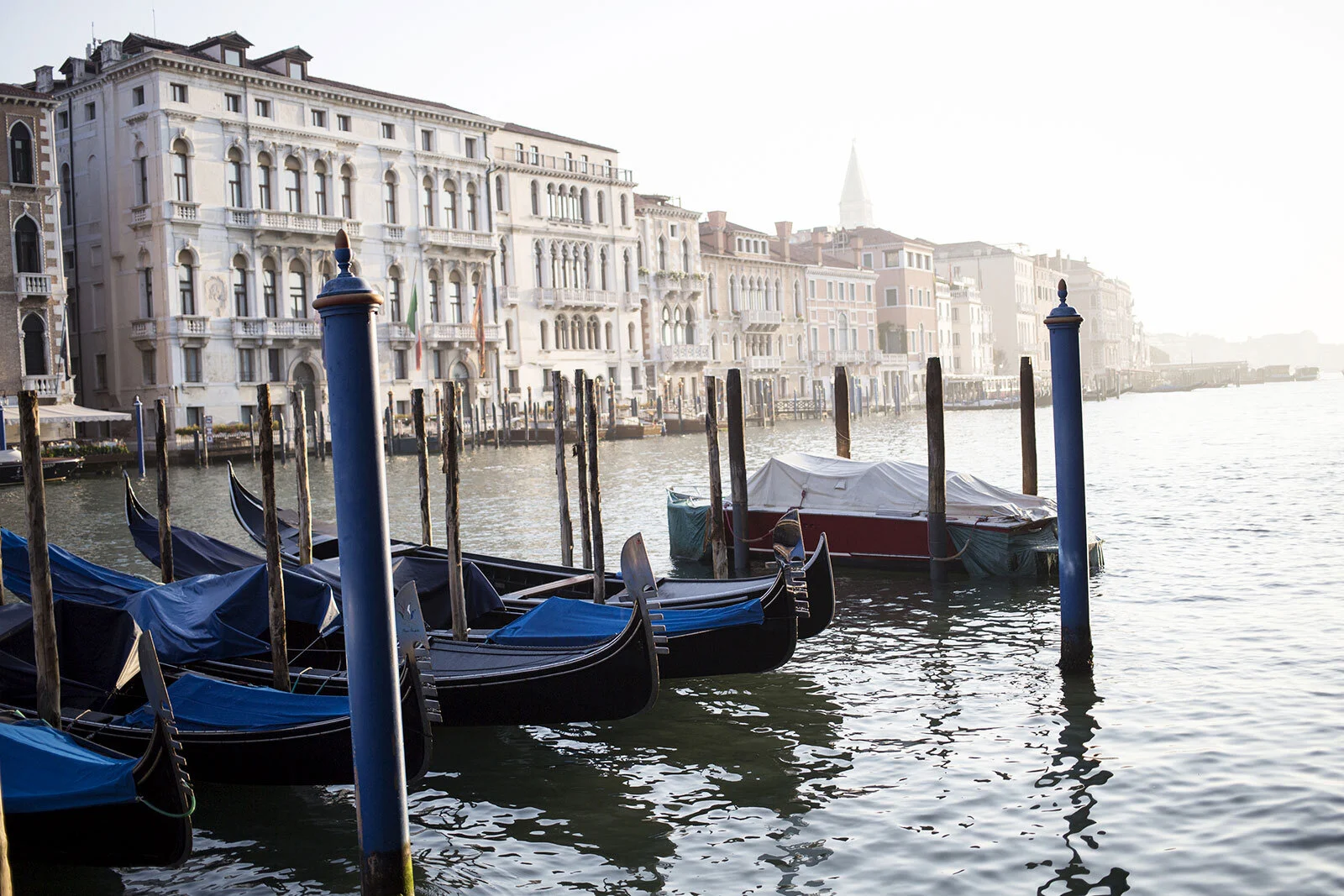Notes On Surrender
Appomattox Court House National Historical Park. Appomattox, VA.
37.377614, -78.796007
Reading Time: 4 min 37 sec
President Abraham Lincoln was correct, we cannot escape history. As General Robert E. Lee creeps back into our news streams through mentions from President Donald Trump and energy surrounding the removal of statues honoring Confederate leadership, the inherited haunts of the American Civil War still call out.
“Fellow citizens, we cannot escape history. We, of this Congress and this administration, will be remembered in spite of ourselves. No personal significance, or insignificance, can spare one or another of us.”
A storm gathers near the area Gen. Grant will bivouac the night of April 8, 1865.
Gen. Grant reeanctor Curt Fields rides past Confederate reenactors at Appomattox.
APRIL 8, 1865
General R. E. Lee
Your note of last evening, in reply to mine of same date, asking the condition on which I will accept the surrender of the Army of Northern Virginia, is just received. In reply I would say that, peace being my great desire, there is but one condition I would insist upon, namely, that the men and officers surrendered shall be disqualified for taking up arms again against the Government of the United States until properly exchanged. I will meet you, or will designate officers to meet any officers you may name for the same purpose, at any point agreeable to yell, for the purpose of arranging definitely the terms upon which the surrender of the Army of Northern Virginia will be received.
U.S. GRANT
Parlor of the McLean House, the site of Confederate General Robert E. Lee's surrender.
HEADQUARTERS ARMY OF NORTHERN VIRGINIA
APRIL 8, 1865
LIEUT. GEN. U.S. GRANT
I received at a late hour your note of to-day. In mine of yesterday I did not intend to propose the surrender of the Army of Northern Virginia, but to ask the terms of your proposition. To be frank, I do not think the emergency has arisen to call for the surrender of this army, but as the restoration of peace should be the sole object of all, I desired to know whether your proposals would lead to that end. I cannot, therefore, meet you with a view to surrender the Army of Northern Virginia, but as far as your proposal may affect the C. S. forces under my command, and tend to the restoration of peace, I should be pleased to meet you at 10 a.m., to-morrow; on the old stage road to Richmond, between the picket-lines of the two armies.
R. E. LEE,
General
A curious cow in a pasture near the old stage road to Richmond, VA.
On April 9, 1865, Confederate Gen. Robert E. Lee will send a message to Union General Ulysses S. Grant to report his willingness to surrender. The day prior Lee will forward a message to Grant exploring “a general peace discussion” — a response Grant receives as a brash reply. An aide to Grant will read the letter aloud that evening, to which Grant will utter, “It looks as if Lee still means to fight.”
Grant has his orders from Lincoln to end this, bring Lee’s Army of Northern Virginia to its knees and under the banner of reunification and reconstruction. There would be no trials, no hangings, no punishment in the eyes of legal authority or treason against the United States. Lincoln would briefly address this in his last speech before John Wilkes Booth murdered the sixteenth President on April 14, 1865. Outside the White House, Lincoln would read from a prepared speech, “that of “re-inauguration of the national authority—reconstruction.”
The strategy was to reunite the country, to welcome the rebel fighters back into the fold of America.
Thomas Jessee, portrays Confederate General Robert E. Lee during sesquicentennial at Appomattox.
“I have probably to be General Grant’s prisoner today and I thought I must make my best appearance.”
The Confederate capital of Richmond, Virginia had fallen April 2 and Lee was forced to abandon any hope of holding that ground. His men were starving to death and shoeless. The civilian population of the South had suffered extreme hardships, disease and inflation rates that made food staples impossible to afford, if one could find any. The Army of Northern Virginia was forced to enlist any male with a pulse, young teens and older men in the act of tactical necessity.
To say that Lee was not a brilliant military leader is wrong; he was, he commanded a massive and once powerful rebel army against the United States in a slaveholder’s rebellion that took the lives of near 700,000. Some historians will point to numbers that are far higher, closer to a million or more, including women and children, slaves and freedmen and women.
With war on the horizon, Lee was offered command of the United States army by President Lincoln. Instead, Lee, resigns his commission and joins the fight to continue the country down a path of her greatest sin, slavery. Missing this chance to alter the course of American history for his home state of Virginia and the special interests of the monied antebellum elite.
“I shall never bear arms against the Union, but it may be necessary for me to carry a musket in the defense of my native state, Virginia, in which case I shall not prove recreant to my duty.”
The horse of Gen. Grant reenactor, Curt Fields, brushes against a surprised tourist posing for a snapshot at Appomattox.
A grave marker at Poplar Grove National Cemetery, near Petersburg, Virginia.
A tractor sits in a Virginia field that boarders the retreat route General Robert E. Lee followed in 1865.
“As they marched, the Army of Northern Virginia tore branches off trees, fitfully gnawed at wild buds, or even peeled and ate the bark itself. Every sudden halt saw a new round of men, like dim, purgatorial souls, pitifully sinking to their knees or senselessly wander off in search of food or the restful escape of a long, deep sleep.””
“So it was in that direction that the Confederate picked up their step and began again, in one long, snaking line, to move.”
Wes, a Confederate reenactor from Texas.
The muddy brogans of a Union reenactor stick out from under his small canvas tent.
Union reenactors fall into order in front of the Peers House in Appomattox Court House National Historical Park.
Tourists watch events during the reeenactment of the Confederate surrender.
On the eve of General Lee’s April 9, 1865 surrender he will call what his commanders believe is a council of war. Lee’s army was surrounded, his men starving. He had two options: surrender or "throw his life on one last murderous fight." Brigadier Gen. E. Porter Alexander, a 29-year-old veteran of this war’s most vicious combat, (Gettysburg, Cold Harbor, Petersburg) will speak up and suggest a third option: guerrilla warfare.
Lee and his army would melt into the wilderness of the Blue Ridge mountains, a tactic fully supported by Confederate President Jefferson Davis but Grant and Lincoln’s worse nightmare. The fighting would be brutal and with lines evaporated the rebels would be free to move like ghosts "concentrating strength against weakness." Lee will not chew lightly on this idea, "the aging general would alter the course of the nation’s history for all time. It would constitute perhaps Lee’s finest moment ever."
Lee’s greatest accomplishment, it seems, was the surrender of his broken army, not to be rewarded by statues of honor and praise but universally scorn for not utilizing his leadership to help unify the country. Lee’s inaction in this regard would be directly related to the violence brought by former rebel fighters as they are set free to return home.
For many southerners and millions of black Americans, the terror would last long beyond Lee's surrender as fighting continued even as the ink of surrender proclamations dried.
"To enforce it’s might over a largely rural population, the Army marched across the South after Appomattox, occupying more than 750 towns and proclaiming emancipation by military order. This little-known occupation by tens of thousands of federal troops remade the South in ways that Washington proclamations alone could not ... Meanwhile, Southern soldiers continued to fight as insurgents, terrorizing blacks across the region. One congressman estimated that 50,000 African-Americans were murdered by white Southerners in the first quarter-century after emancipation.” — The Dangerous Myth of Appomattox: The New York Times
“It is a fatal mistake, nay a wicked misery to talk of peace or the institutions of peace. We are in the very vortex of war.”
On the morning of April 10, 1865, Lee meets for about an hour with Grant before the Union general heads north from Appomattox to Washington, D.C. The two commanders will doff their hats goodbye but this will not be the last time the two men will meet again. On May 1, 1869, Ulysses S. Grant — now the 18th President of the United States — will welcome the aging rebel commander to the White House.
Tyler, a Union reenactor from Delaware participates in events at Appomattox Court House, Virginia. April 10, 2015.
“In the 1860s the leaders of the cotton belt made one of the most prodigious miscalculations in recorded history. On the eve of the era of applied technologies, in which more and more work is done with fewer people and less effort, they made war to preserve the day of chattel slavery - the era of gang labor, with its reliance on the same use of human muscles that built the pyramids. The lost cause was lost before it started to fight. Inability to see what is going on in the world can be costly.”










































